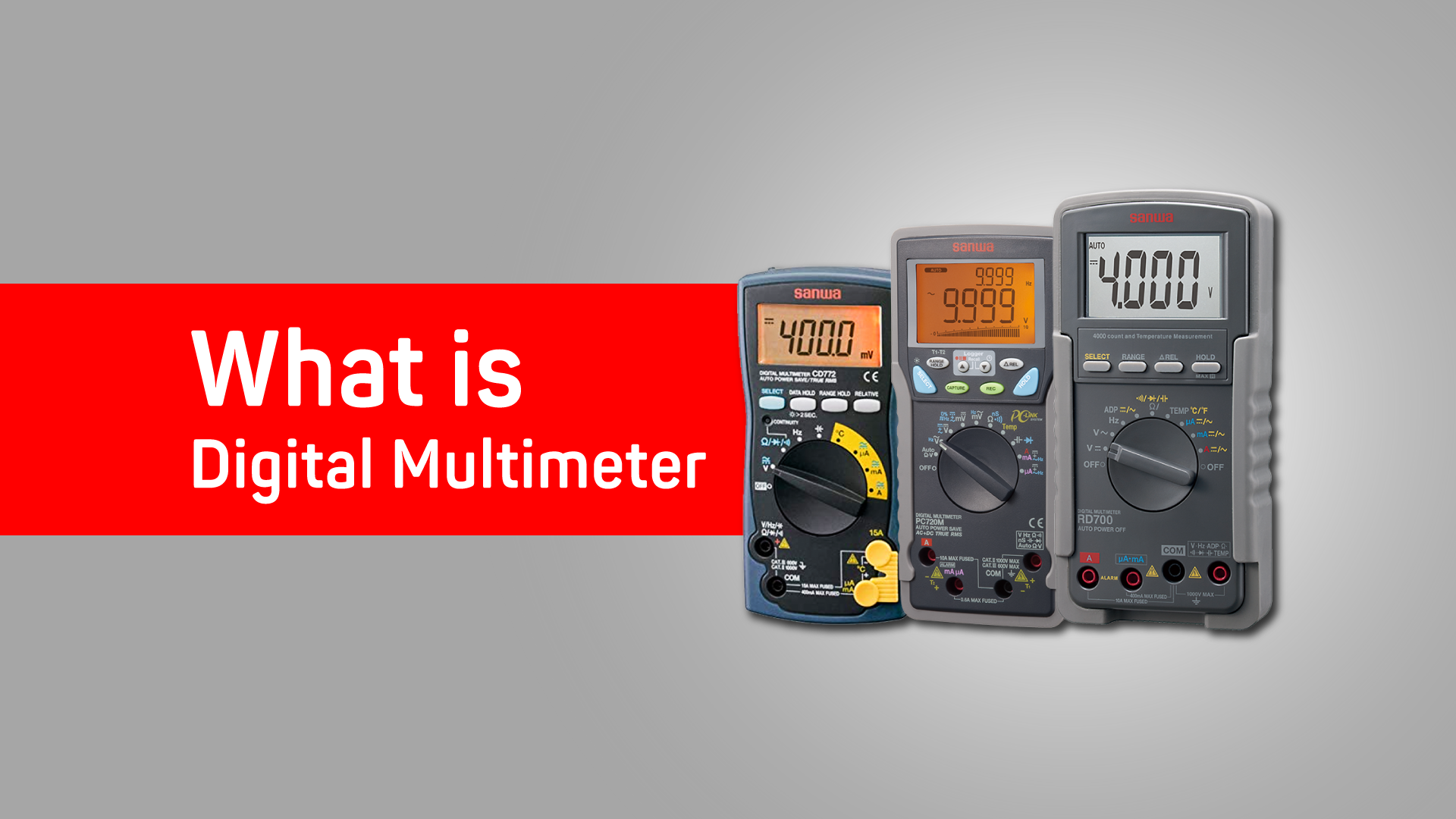
A digital multimeter (DMM) is an essential electronic measuring instrument used to test and diagnose electrical circuits. It combines the functions of three devices in one: a voltmeter (measuring voltage), an ammeter (measuring current), and an ohmmeter (measuring resistance). Today, digital multimeters are widely used by electricians, technicians, engineers, and DIY enthusiasts for troubleshooting and maintenance.
Unlike analog multimeters, digital multimeters display readings in numeric format on an LCD screen, offering greater accuracy and ease of use. Most DMMs also include features such as auto-ranging, data hold, continuity buzzer, diode testing, and even temperature measurement in advanced models.
How Does It Work?
A digital multimeter works by converting analog signals (like voltage or current) into digital data using an analog-to-digital converter (ADC). This data is then processed and displayed on the screen. It can be used to test batteries, power supplies, household wiring, electronic components, and appliances.
Advantages of Digital Multimeters Over Analog Meters:
Digital multimeters (DMMs) have become the preferred choice for electricians, engineers, and technicians due to their accuracy, convenience, and advanced features. While analog meters once dominated the market, DMMs now offer significant advantages that make them superior for most applications.
1. Greater Accuracy:
Digital multimeters provide more precise readings compared to analog meters. They display values in exact digits, often up to four or more decimal places, eliminating the guesswork involved in reading analog needle positions.
2. Easy-to-Read Display:
DMMs feature clear, digital screens that display numeric values, often with backlighting and auto-ranging. This makes them easier to read in low light or complex setups, especially for beginners or in fast-paced environments.
3. Multiple Functions in One Device:
Most digital multimeters combine multiple measurement functions—voltage (AC/DC), current, resistance, continuity, capacitance, frequency, and even temperature—in a single, compact tool. Analog meters often require separate devices or add-ons for these features.
4. Auto-Ranging Capability:
Many DMMs automatically detect and select the appropriate measurement range, saving time and reducing the risk of user error. Analog meters require manual range selection, which can lead to inaccurate readings if set incorrectly.
5. Data Hold & Storage:
Digital models often include features like data hold, min/max recording, and even memory storage for later review—useful for diagnostics and report generation.
6. Safety Features:
Modern DMMs often come with better protection circuits, fuses, and safety ratings (CAT II, CAT III, CAT IV) to ensure user safety, especially in high-voltage environments.
How to Use a Digital Multimeter:
A digital multimeter (DMM) is one of the most essential tools for anyone working with electronics, from professional technicians to DIY enthusiasts. With the ability to measure voltage, current, resistance, and more, a DMM helps diagnose problems in circuits and electrical components. In this blog, we’ll walk you through the basics of how to use a digital multimeter safely and effectively.
1. Measuring DC Voltage
-
Set the dial to the DC voltage symbol (V with a straight line).
-
Insert the probes: Black in COM, Red in VΩ.
-
Touch the probes across the two points in the circuit.
-
Read the display: It shows the voltage between the two points.
2. Measuring AC Voltage
-
Turn the dial to the AC voltage setting (V with a wavy line).
-
Use the same probe setup.
-
Touch the probes to the live and neutral terminals (e.g., power outlet).
-
Be careful: AC voltage is dangerous—use insulated probes and stand on a dry surface.
3. Measuring Resistance
-
Turn the dial to Ω (ohm symbol).
-
Ensure the circuit is powered off.
-
Place the probes on both sides of the resistor or the component.
-
The display shows the resistance in ohms.
4. Measuring Continuity
-
Set the dial to the continuity test mode (symbol usually a diode or soundwave).
-
Place the probes on both ends of the wire or connection.
-
If the circuit is complete, you’ll hear a beep.
5. Measuring Current (Amps)
-
Set the dial to the appropriate current setting (A, mA, or μA).
-
Move the red probe to the correct port (mA or 10A, depending onthe expected current).
-
You must break the circuit and connect the meter in series with the circuit.
-
Take care not to exceed the current rating of the meter.


